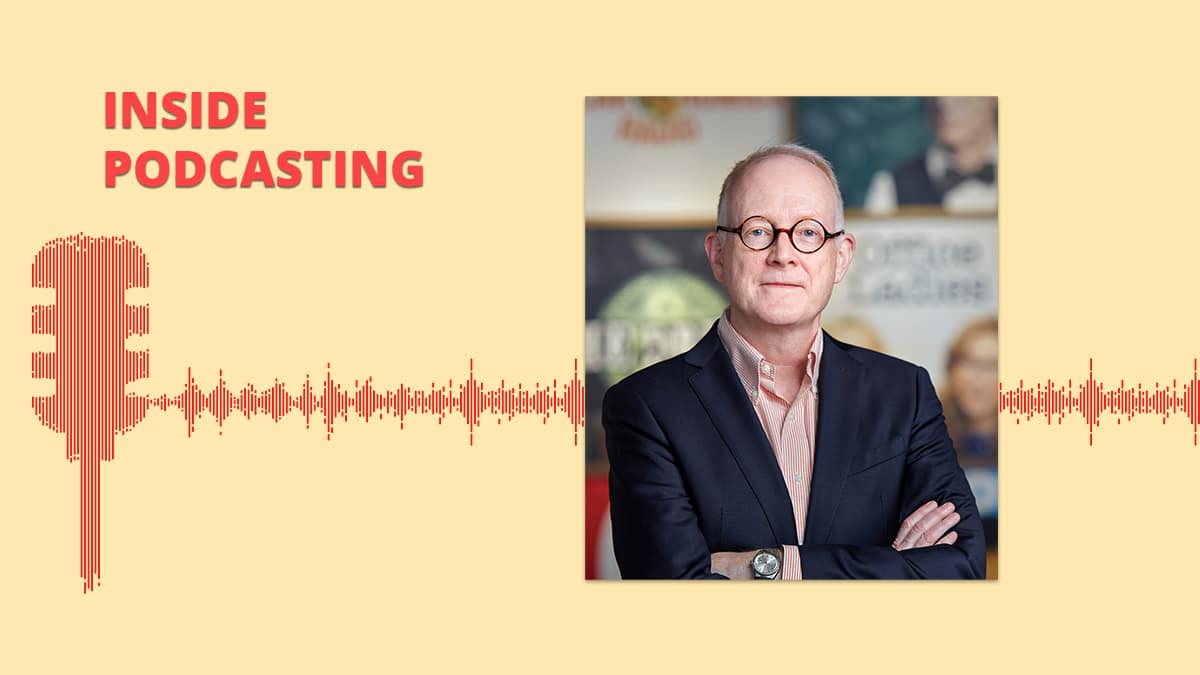Publishing Audio
In this piece, the sixth in our Inside Podcasting special, we go big. We meet the person entrusted to take the Condé Nast publishing empire into podcasting. It’s a crowded space, but the publisher has marketing muscle and is not short of creative wordsmiths. The person leading their charge is a veteran of audio programming development and production experience, the former chief content officer for podcasting giant Stitcher and someone who loves a challenge. Meet Chris Bannon.
NEW YORK — When print publisher Condé Nast Entertainment appointed Chris Bannon SVP and head of global audio last year, it signaled how serious it was about crossing over into audio. As the company put it, his role “is part of CNE’s ongoing strategic realignment to prioritize global entertainment and expand into the podcast space across its network of brands.”
Bannon is a heavy hitter. He has more than 25 years of audio programming, development and production experience in the United States as a senior programming executive and producer at public radio stations WNYC and WBUR. More recently, he was the chief content officer at podcast company Stitcher. He left when SiriusXM bought the company.
The podcast marketplace is so crowded, platform-dependent and trend-driven that launching any single show is a huge challenge.
Chris Bannon
His fascination with the power of the human voice goes back to his hearing a recording of Orson Welles’ iconic 1938 War of the Worlds broadcast. His real passion for audio started in college with a long-term stint at Brown University-based WBRU-FM. Bannon remembers it as, “Four years of Sunday morning classical and overnight jazz DJing — it didn’t look like a career, but it was tremendous fun.”
After college, he discovered the submission-rejection path familiar to thousands of would-be broadcasters. “No one wanted to hire me,” says Bannon. “I got one offer to host pre-taped big band tracks in a tiny station on the Rhode Island coast. Applications to WNYC and WQXR in New York — two stations I would later work at — went unanswered. So, I gave up and went to grad school!”
A series of miraculous accidents
Studying for a master’s degree in English didn’t particularly boost his employment status or his prospects in radio. Eventually, a foot in the door came in the way of what he calls a series of miraculous accidents.
“I was living at home in Hershey, Pennsylvania, broke and in debt for college and graduate school, and I answered a newspaper ad. The local public TV station was looking for temporary hosts for their December pledge drive. The gig paid US$250 to be on call for up to 10 days. I somehow passed the audition, got the gig, and when that was over, they offered me $6/hour to help with other broadcast fundraising and live event production.”
Fast forward to October 2021, and Bannon now finds himself in a different kind of drive: Pushing publishing giant Condé Nast into the forefront of podcasting. “My job is to help our brands build strong programming that reflects the excellence of our journalism, and that helps bring our editors’ work to new audiences.” Bannon is aware of what’s ahead: “The podcast marketplace is so crowded, platform-dependent, and trend-driven that launching any single show is a huge challenge.”
However, Bannon does have one significant advantage over anyone else wanting to make their mark: Condé Nast’s marketing muscle. “Fortunately for me, Condé is filled with superb marketing and promotions staff, people with real expertise in finding listeners where they are.”
It sounds like a dream job for any creative with an eye on powerful audio. Bannon admits he has few reasons to complain, “largely because it’s a pure pleasure to spend my days among the incredibly smart and driven editors, writers and support staff who seem to love podcasting as much as I do.” He sees a critical part of his job is helping Condé Nast’s partners outside the United States get into podcasting.
Equipment
Control Room: 24-inch iMacs with Pro Tools and RME’s Totalmix software; Henry Engineering Multiphones zoned talkback system; four PreSonus headphone amps; Soundcraft GB2R console for monitoring headphone levels; RME Fireface UFX+ D/A converter and USB backup; and Telos HX-1 telephone interface.
Studio A and Studio B: Four Neumann KMS 105 mics; Four Sony MDR 7506 headphones; and Stereo mini connector for additional source (e.g., laptop).
Studio C: Four Neumann KMS 105 mics; four Sony MDR 7506 headphones; and Stereo mini connector for additional source (e.g., laptop).
Distribution: All of Condé Nast’s programming is available wherever you listen to podcasts.
As for the gear he uses, he describes himself as a boring executive and so his principal tools are Gmail, Slack and Zoom.
His advice for any up-and-coming podcaster or anyone contemplating starting on the journey: “There are far fewer barriers to entry in audio today than there were when I graduated. Find a show you love and volunteer to help or offer to do research. Build their relationship with their audience or lend a hand on a live show,” he says.
“Though I started as a host, I quickly discovered that I loved producing. Making something good happen for an audience is still the greatest thrill,” he continues. “Find out what part of it you love, and gain expertise. Try to find work with the people you most admire if you can. Be prompt and clear when you communicate and deliver what you promise. Listen to your own work as if you’re a stranger hearing it for the first time and focus on making it better.”
“And if you want to hear something really amazing,” he concludes, “all of Condé Nast’s programming is available wherever you listen to podcasts.”

